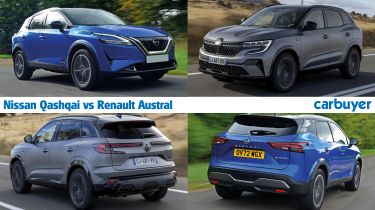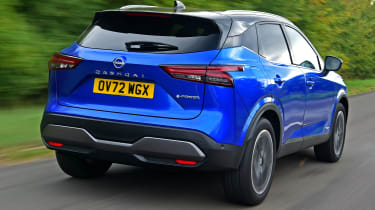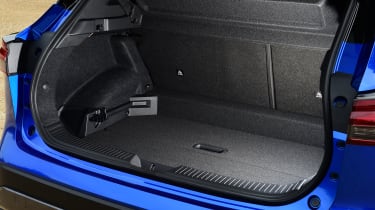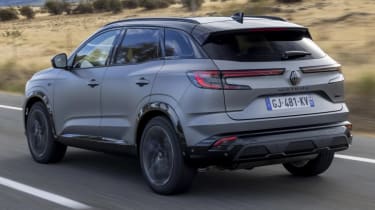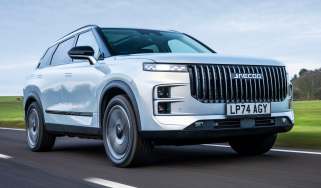Nissan Qashqai vs Renault Austral – which should you buy?
The Qashqai has long been a best-seller, but has it now been outdone by the Renault Austral, its mechanical sibling?
Like it or loathe it, we can attribute the UK’s SUV craze to the original Nissan Qashqai, which went on sale all the way back in 2007. While it’s seen a fluctuation in its popularity over the last decade or so, Nissan’s family SUV is still going strong and remains one of the best-selling new cars in the UK today.
While the Qashqai is a compelling package in and of itself, it’s easy to see why crossovers and SUVs became so popular in the first place; they combine the everyday usability and low running costs of a family hatchback, with the rugged looks and practicality of a proper 4x4.
 The most economical cars 2025 – petrol, diesel, hybrid and plug-in hybrid
The most economical cars 2025 – petrol, diesel, hybrid and plug-in hybrid
Nowadays, the Qashqai is available alongside a plethora of rivals that include the Hyundai Tucson, Kia Sportage and Mazda CX-5. However, the Qashqai now has a new competitor in the form of the Renault Austral. This shares many of its parts with the Nissan, however, there are a handful of distinct differences that may initially go under the radar of the average car buyer.
We’ve driven each model separately and in this article will break down the differences between the two cars to help you decide which should make its way onto your driveway. If you’d like to learn more about either of these models – or any new car for that matter – we have full in-depth reviews elsewhere on our website, as well as a full list of the best family SUVs you can buy.
For now, read on to see which is best: the Nissan Qashqai or the Renault Austral.
Which is the cheapest to run?
As previously mentioned, one of the main draws of a family crossover is its inherently low running costs. This is typically achieved thanks in part to efficient powertrains – nowadays, usually featuring some kind of electrical hybrid assistance.
The Nissan Qashqai is available with a range of engines, with the range kicking off with a 1.3-litre three-cylinder 48-volt mild-hybrid petrol. Available in two different power outputs, even the most powerful 156bhp version will return around 45mpg – this drops to around 40mpg when the car is specced with all-wheel-drive.
New for 2022, the Qashqai is now available with an ‘e-Power’ self-charging hybrid powertrain. This comprises a 1.5-litre petrol engine with a larger electric motor to produce a punchy 187bhp. This model is more expensive to buy than the mild-hybrid variants, however, Nissan claims it will return over 53mpg on the combined WLTP cycle, which makes it best-suited for higher-mileage drivers. The Nissan Qashqai hybrid also has a much lower Benefit-in-Kind tax rating, making it the top choice for company car drivers.
The Renault Austral is only available with a self-charging hybrid powertrain, so you’d expect this to be the same engine used in the Qashqai e-Power. However, the Austral in fact uses an entirely different setup, consisting of a smaller, yet turbocharged 1.2-litre petrol engine and electric motor. This manages to be more powerful than the Nissan – the Austral produces 196bhp – while also returning over 60mpg.
Therefore, which model offers better value largely depends on which model you go for; the Nissan’s mild-hybrid offerings create a cheaper entry point into the range, though the Austral’s self-charging hybrid unit is more efficient and powerful than the Qashqai’s. Of course, that hybrid powertrains means the Renault is only available with an automatic gearbox, which could be a dealbreaker for those who like to change gears themselves.
Which is the nicest to travel in?
A good family SUV or crossover must be comfortable for driver and passengers alike as they are almost invariably used as everyday workhorses. Both the Nissan Qashqai and Renault Austral have been set up primarily for this brief, with supple suspension to soak up bumpy urban roads. One benefit of choosing the Qashqai is that top Tekna+ models benefit from multi-link rear suspension, which improves ride and refinement somewhat.
However, the Qashqai can’t match the Austral when it comes to its interior; despite being an all-new model, the Nissan’s cabin is already starting to feel outdated. The Qashqai’s overall design isn’t as exciting as what you'd get in, say, a Kia Sportage, plus the Japanese brand’s infotainment system leaves a bit to be desired. While it’s simple enough to use, the main touchscreen isn’t overly sharp and base Qashqais get a much smaller screen and analogue dials which may dissuade some buyers.
On the other hand, the Austral is an utter tech fest and takes much of its equipment from the new all-electric Renault Megane E-Tech. The cabin is dominated by a giant 12.3-inch portrait touchscreen, paired with a highly-configurable 12-inch digital drivers display; both utilise Google software in all but the entry trim level and are incredibly slick to use. The overall design of the Austral’s cabin is more exciting than the Qashqai’s too, with lots of swanky ambient lighting – although, the Nissan may marginally have the edge over Renault in terms of build quality.
Which is the most practical?
A family workhorse must be practical, however, neither the Nissan Qashqai nor the Renault Austral is class-leading in terms of space – a Skoda Karoq is a better choice if you’re planning to carry larger items frequently. We still think that both the Nissan and Renault should offer sufficient room for most families.
The Nissan Qashqai boasts a boot measuring 502 litres in capacity – this shrinks to 476 litres on higher-end cars which get useful luggage boards for securing loose items. For this latest generation, Nissan has also made it so the Qashqai’s rear doors open by a massive 85 degrees, meaning it’s much easier to fit a child seat.
The Austral’s outright capacity is slightly smaller than the Nissan’s, measuring 430 litres. However, the rear seats can be slid forwards to free up an extra 120 litres of space, bringing the total volume to 550 litres – of course, this does come at the expense of rear passenger legroom.
Which should I buy?
In many ways, the third-generation Nissan Qashqai is a continued refinement of the first-generation Qashqai which debuted all those years ago. While this means the new car packs much of what buyers loved about the original, it can sometimes feel rather outdated in a sea of impressive rivals. Regardless, the Nissan remains a strong choice for buyers looking for a frugal family SUV. However, if you can afford to stretch to a self-charging hybrid car, the Renault Austral is one of the most desirable and hi-tech options available and would be our pick.
Want to see what other hybrid SUVs are available? Read our top 10 list here
Recommended

New Subaru Trailseeker revealed as rugged electric SUV with 375bhp

New Subaru Solterra brings more range, power and polish
Most Popular
Tips & advice

Car dashboard warning lights: what does each symbol mean?

Electric car charging stations: public networks, charger types, apps and maps


